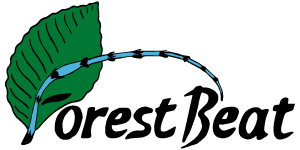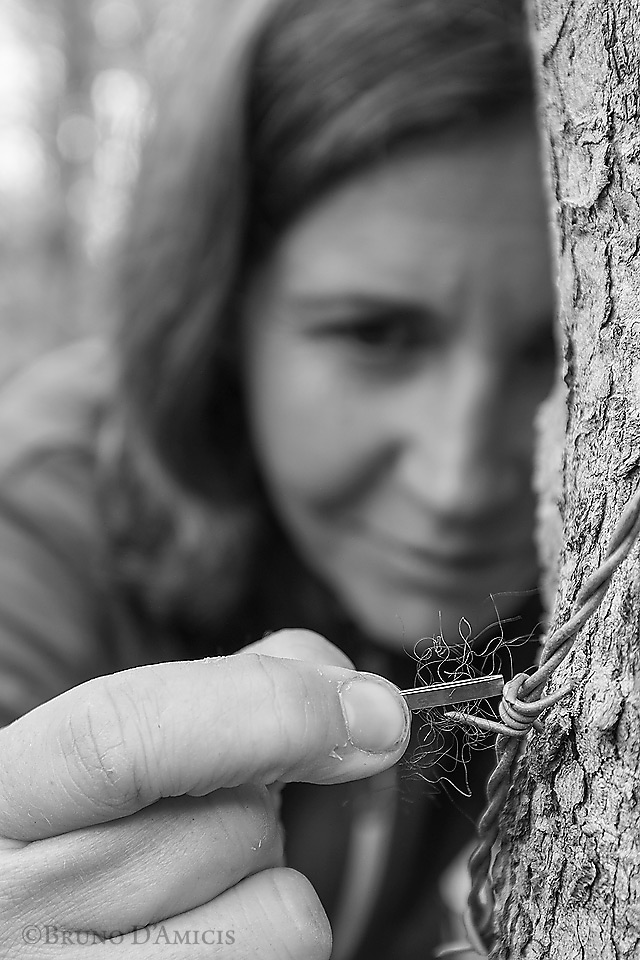Forestbeat #74
Forest People – Servizio Scientifico
© Bruno D’Amicis – www.silva.pictures
Roberta Latini, biologa presso il Servizio Scientifico del PNALM, raccoglie con cura i peli di un orso bruno marsicano rimasti attaccati ad una “trappola genetica” collocata su un albero nella faggeta. Come abbiamo visto gli orsi amano grattarsi vigorosamente su alcuni alberi particolari, in gergo “rub-tree”, e così facendo lasciano una traccia odorosa del loro passaggio e informano altri orsi della propria presenza. Alcuni di questi alberi noti ai tecnici sono stati armati con del filo spinato, assolutamente innocuo per gli animali, ma che consente di trattenere più a lungo i peli. I peli sono importanti, poiché da essi infatti è possibile estrarre in laboratorio il DNA dell’individuo cui appartengono e identificarne il genotipo. Questo serve a realizzare un censimento genetico della popolazione di orsi appenninici. Monitorando da vicino questi animali e il loro ambiente, Roberta e i suoi colleghi svolgono un lavoro difficile ma appassionante, fondamentale per la salvaguardia dell’orso più raro al Mondo.
Roberta Latini, biologist of the scientific department of PNALM, is collecting the hairs left by a Marsican bear on a “genetic trap” placed on a tree in the beech forest. As we have already seen, bears love to rub themselves against the bark of some trees, named “rub-trees”, and by doing so they leave behind their smell and thus inform other bears of their presence. Some of these trees are known to scientists and a short piece of barb wire has been placed on them to “trap” the hairs more firmly. These hairs are very important, because from them the DNA of the owner can be extracted and its genotype identified. All this with the purpose of a genetic census of the bears in the Apennines. By monitoring these animals and their habitat, Roberta and her colleagues carry on a difficult but wonderful job, fundamental for the conservation of the World’s rarest bear.
#parcoabruzzo #forestbeat #faggetevetuste #immaginieavventure
@brunodamicisphoto, @silvapictures, @wildlifeadventures
Category
Forest

